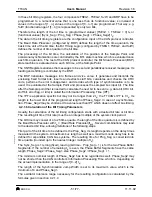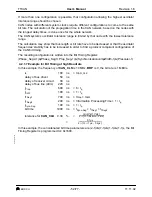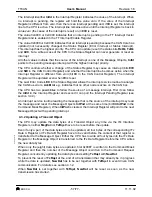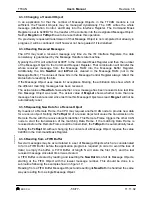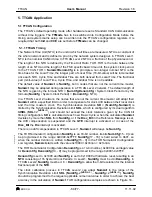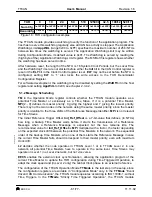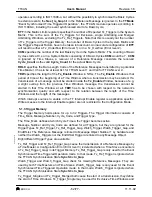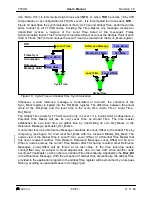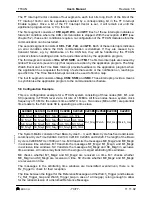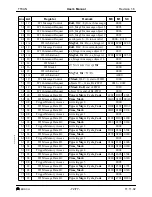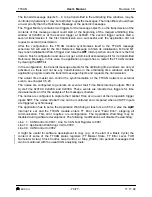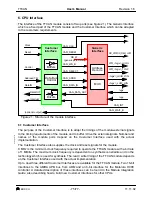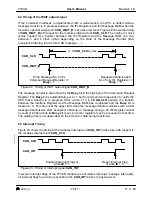
User’s Manual
BOSCH
- 65/77 -
Revision 1.6
TTCAN
11.11.02
manual_about.fm
TxRqst and RmtEn may never be set for a periodic transmit message. To enable the
transmission of a periodic message inside an Exclusive Time Window, TxRqst has to be set to
‘0’ and NewDat has to be set to ‘1’. The message will be transmitted each time its
Tx_Trigger(s) become(s) active, neither TxRqst nor NewDat will be changed. MSC will be
updated according to the success of the transmissions.
The application program has to ensure that all data of the periodic transmit messages are
valid before the time triggered communication is started.
5.1.4.3 Event Driven Transmit Message
The configuration of an event driven transmit message for the transmission inside an
Arbitrating Time Window is the same as for “Event driven Communication”. The combination
of TxRqst=‘0’ and NewDat=‘1 is illegal for an event driven transmit message.
The Message Objects for event driven transmit messages may be managed dynamically,
several messages with different identifiers may share the same Message Object.
5.2 TTCAN Schedule Initialisation
The synchronisation to the TTCAN message schedule starts when the Operation Mode is
switched from Configuration Mode to either Strictly Time Triggered Operation or to Event
Synchronised Time Triggered Operation. All nodes will start with Cycle Time=0 at the
beginning of their Trigger List, SyncSt will be 0 (out of synchronisation), and no transmission
will be enabled with the exception of the Reference Message. Nodes in mode Event
Synchronised Time Triggered Operation will ignore Tx_Ref_Trigger and Watch_Trigger and
will use instead Tx_Ref_Trigger_Gap and Watch_Trigger_Gap until the first Reference
Message decides whether a Gap is active.
5.2.1 Time Slaves
After configuration, a Time Slave will ignore its Watch_Trigger and Watch_Trigger_Gap when it
did not receive any message before reaching the Watch_Triggers. When it reaches
Initial_Watch_Trigger (not part of the Trigger List, defined as maximum of Cycle Time), IWT in
the Interrupt Vector register is set, the FSE is frozen, and the Cycle Time will become invalid,
but the node will still be able to take part in CAN bus communication (to give acknowledge or
to send error flags). The first received Reference Message will restart FSE and Cycle Time.
When a Time Slave has received any message but the Reference Message before reaching
the Watch_Triggers, it will assume a Fatal Error (Error Level 3), set WTr in the Interrupt Vector
register, switch off its CAN bus output, and enter the Bus Monitoring Mode. In the Bus
Monitoring Mode, it is still able to receive messages, but it cannot send any dominant bits and
therefore cannot give acknowledge. The Fatal Error state can be left via a re-configuration.
When no error is encountered during synchronisation, the first Reference Message will put
SyncST to Synchronising and the second will put it (depending on its Next_is_Gap bit) into
In_Schedule or In_Gap, enabling all Tx_Triggers and Rx_Triggers.
5.2.2 Potential Time Masters
After configuration, a Potential Time Master will start the transmission of a Reference
Message when it reaches its Tx_Ref_Trigger (or its Tx_Ref_Trigger_Gap when in mode Event
Synchronised
Time
Triggered
Operation).
It
will
ignore
its
Watch_Trigger
and
Watch_Trigger_Gap when it did not receive any message or transmit the Reference Message
successfully before reaching the Watch_Triggers (assumed reason: All other nodes still in

